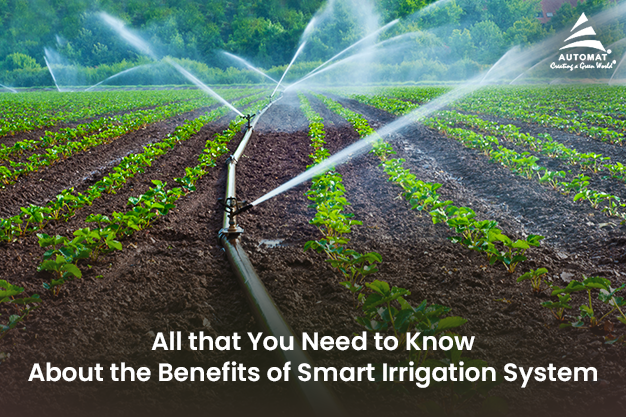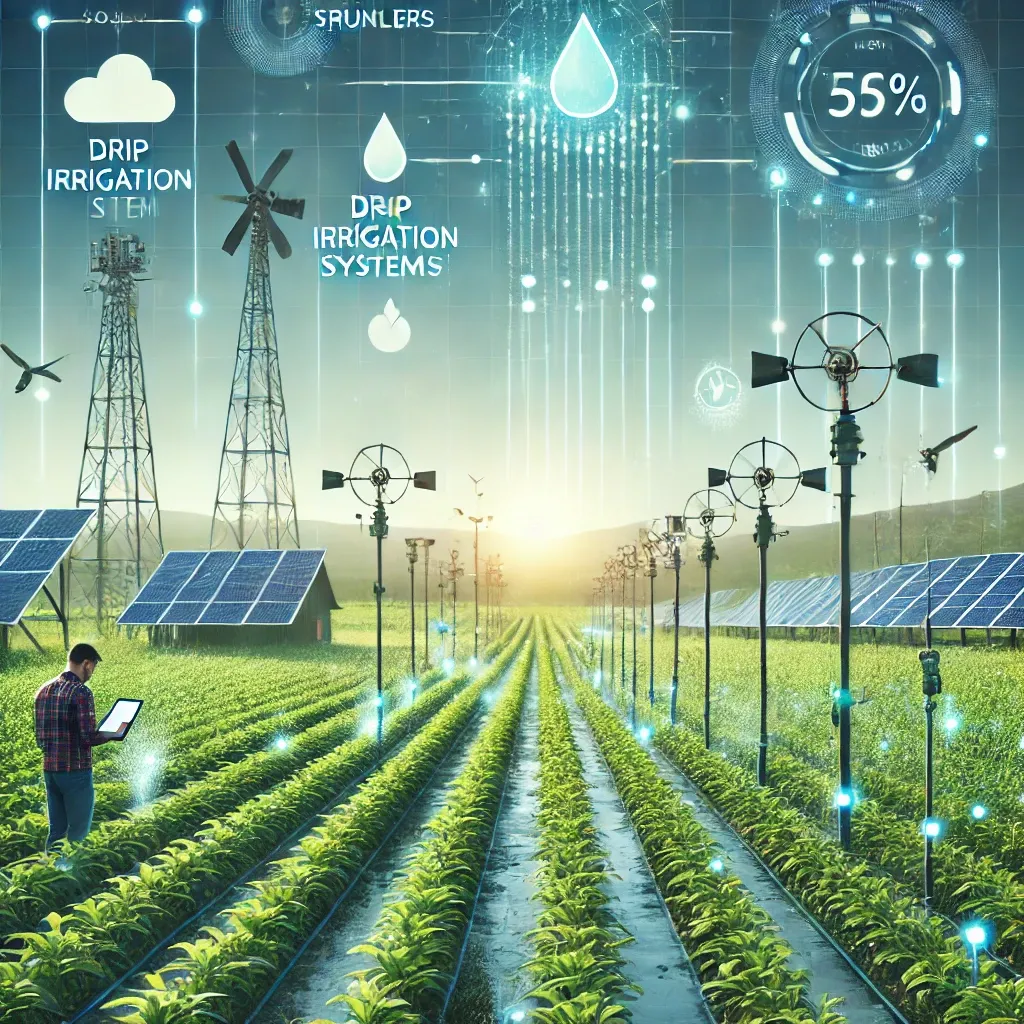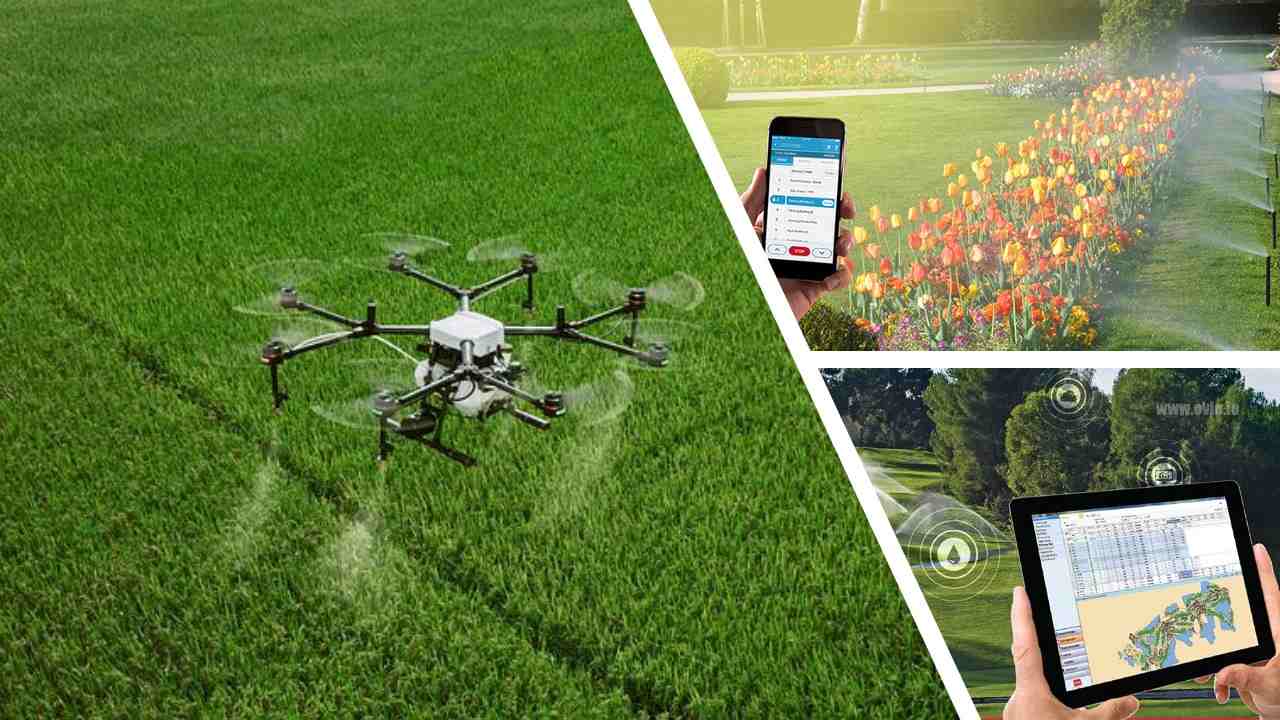Introduction
As the world grapples with the challenges of water scarcity and the need for sustainable agricultural practices, smart irrigation systems are emerging as a vital solution. By integrating technology with traditional irrigation methods, these systems enhance water efficiency, improve crop yields, and promote environmental sustainability. This article delves into the workings of smart irrigation systems, their benefits, types, challenges, and future trends.

Understanding Smart Irrigation Systems
What Are Smart Irrigation Systems?
Smart irrigation systems use advanced technologies, such as sensors, weather data, and automated controllers, to optimize the amount of water delivered to crops and landscapes. Unlike traditional irrigation methods that rely on fixed schedules, smart irrigation systems adapt to real-time environmental conditions, ensuring that water is used efficiently and effectively.
Key Components
-
Soil Moisture Sensors: These sensors measure the moisture levels in the soil, allowing the system to determine when and how much water is needed. This data is crucial for preventing over- or under-watering.
-
Weather Stations: Weather data plays a significant role in smart irrigation. Local weather stations provide information on rainfall, temperature, humidity, and wind speed, helping the system adjust watering schedules based on current conditions.
-
Automated Controllers: These programmable devices receive data from moisture sensors and weather stations, allowing for real-time adjustments to irrigation schedules. They can be controlled remotely via smartphones or computers, adding convenience and flexibility.
Drip Irrigation Systems: Many smart irrigation setups utilize drip irrigation, which delivers water directly to the root zone of plants. This method minimizes evaporation and runoff, ensuring that more water reaches the plants effectively.

Benefits of Smart Irrigation Systems
1. Water Conservation
One of the most significant advantages of smart irrigation systems is their ability to conserve water. By delivering precise amounts of water based on actual needs, these systems reduce waste and promote responsible water use. According to studies, smart irrigation can cut water usage by up to 50% compared to traditional systems.
2. Improved Crop Yields
Efficient water management directly impacts crop health and productivity. Smart irrigation ensures that plants receive optimal hydration, leading to healthier crops and higher yields. This is particularly beneficial in regions where water availability is limited.
3. Cost Savings
Although the initial investment in smart irrigation technology may be higher, the long-term savings are substantial. Reduced water usage translates into lower utility bills, and efficient irrigation can decrease labor costs associated with manual watering practices.
4. Environmental Sustainability
By minimizing water runoff and preventing overwatering, smart irrigation systems contribute to environmental sustainability. They help protect local ecosystems, reduce the risk of soil erosion, and decrease the likelihood of water pollution from fertilizers and pesticides.
5. Remote Monitoring and Control
Many smart irrigation systems offer remote access through mobile apps or web interfaces, allowing users to monitor and control their systems from anywhere. This feature enhances convenience and enables quick adjustments in response to changing weather conditions or plant needs.

Types of Smart Irrigation Systems
1. Weather-Based Systems
Weather-based irrigation controllers use local weather data to adjust watering schedules. These systems can suspend irrigation during periods of rain or adjust watering times based on temperature and humidity levels.
2. Soil Moisture-Based Systems
Soil moisture sensors continuously monitor the moisture levels in the soil, providing real-time data to the irrigation controller. These systems activate irrigation only when the soil moisture falls below a specified threshold.
3. ET-Based Systems
Evapotranspiration (ET) is the process by which water evaporates from the soil and is transpired by plants. ET-based irrigation controllers calculate the amount of water lost through this process and adjust irrigation accordingly. This method is particularly effective in regions with varying climates.
4. Hybrid Systems
Hybrid smart irrigation systems combine elements of weather-based and soil moisture-based systems to provide comprehensive water management. By integrating multiple data sources, these systems offer greater precision and efficiency.

Challenges Facing Smart Irrigation Systems
1. Initial Costs
While smart irrigation systems can lead to significant long-term savings, the upfront costs of installation can be a barrier for some farmers and gardeners. The investment in technology, sensors, and controllers may deter individuals with limited budgets.
2. Technical Knowledge
Implementing smart irrigation systems requires a certain level of technical knowledge. Users must be comfortable with technology and capable of troubleshooting potential issues. This knowledge gap can limit adoption among some agricultural communities.
3. Maintenance and Reliability
Like any technology, smart irrigation systems require regular maintenance to ensure optimal performance. Sensors and controllers may need calibration or replacement over time, which can pose challenges for users who lack technical expertise.
4. Data Privacy and Security
As smart irrigation systems become more connected, concerns about data privacy and security arise. Users must be aware of potential vulnerabilities and take steps to protect their systems from unauthorized access.

Future Trends in Smart Irrigation Systems
1. Integration with IoT
The Internet of Things (IoT) is revolutionizing agriculture, and smart irrigation is no exception. Future systems are expected to become even more integrated with IoT devices, allowing for seamless data sharing and enhanced automation. This integration will lead to more precise irrigation management and improved overall efficiency.
2. Machine Learning and AI
As machine learning and artificial intelligence technologies advance, smart irrigation systems will become more intelligent. These systems will analyze vast amounts of data to make predictive adjustments, optimizing irrigation schedules and water usage based on historical patterns and real-time data.
3. Increased Adoption in Urban Areas
With urbanization on the rise, the demand for smart irrigation systems in city landscapes is growing. Smart irrigation can help municipalities manage water resources more effectively, leading to greener urban environments and improved quality of life for residents.
4. Sustainable Practices
As awareness of environmental issues continues to rise, more farmers and gardeners are seeking sustainable practices. Smart irrigation systems align with this trend by promoting responsible water use and reducing the environmental impact of agriculture.

Conclusion.
Smart irrigation systems are at the forefront of the agricultural revolution, addressing the critical challenges of water scarcity and sustainable farming. By leveraging technology, these systems optimize water usage, improve crop yields, and promote environmental conservation. Despite the challenges they face, the benefits of smart irrigation are clear, making it a valuable investment for farmers, landscapers, and municipalities alike. As technology continues to evolve, the future of smart irrigation systems looks promising, paving the way for a more sustainable and efficient agricultural landscape.


You must be logged in to post a comment.